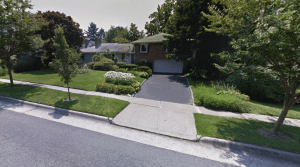
Many of Port’s street names, such as Monfort, Bogart, Mitchell, are family names. Do you ever wonder who these people were?
The earliest settlers in Cow Neck, now Port Washington, came from Holland. The Monforts and Bogarts were among them. Peter Monfort, originally spelled Monfoort with the accent on the last syllable, arrived here in the 1600s and bought 104 acres from the Rapelje family, French Huguenots who fled to Holland to escape persecution in France. The Monfort farm included what is now Monfort Hills, the post office, the school parking lot and the cemetery. Monfort family members still live in Port.
Pieter Luyster Bogart’s land extended from Port Washington Boulevard, known as Middle of the Neck Road in the old days, to Hempstead Harbor. In 1893, the entire property was sold for sand mining, an important industry that began around 1865.
Robert Mitchell came from England in 1694 and was a farmer who married twice into distinguished families. His son, Robert Jr., married Mary Latham, whose father owned the Plandome Mill and surrounding property. Another son, John, purchased additional land with funds from his father’s estate, which he farmed apparently with much success as he built a 36-room house called Mitchell Hall. John Jr. was a Revolutionary War patriot. His son, Benjamin, who was killed by robbers who invaded the house in 1783, is buried in the family burial ground off New Street and Fifth Avenue. Other family members distinguished themselves in many fields. Samuel Latham Mitchell was a United States Senator. Wilhelmina Mitchell helped to found the Port Washington Public Library, where she was the first librarian until her retirement at age 80. The library was in the Baxter House on Shore Road. Charles Mitchell established Carlton Avenue and around 1863 began selling off parts of the farm, which are now Second, Third, Fifth and Bayview Avenues.

John Murray and Edwin Reid were partners in a sand mining company. Between 1900 and 1910 they developed the areas that bear their names. After the railroad reached Port in 1898, affluent city people began moving to Port and built large houses. Forty-one venerable old houses from the early 1900s are in the Port Washington Heights Historic District. Twenty-six are on Murray and Reid Avenues and fifteen more are on Huntington Road.
What is now Stannard’s Brook Park was carved out of Mitchell property by Elbert Stannard, who also purchased Mitchell Hall, which he renamed The Anchorage. Captain Stannard bought wrecked Civil War vessels from which he salvaged fittings and lumber. While operating his shipyard, a fire broke out, burning six wooden warships and two schooners to the water line in front of the present day Port Washington Yacht Club. The flames lit the skies and their glow could be seen as far as the Rockaways. After Captain Stannard’s passing, The Anchorage was operated as a boarding house for about 20 years and was demolished in 1956.
Joel Davis came to Cow Bay in 1810 from Southampton, where his ancestors had settled in 1640. He was a farmer and raised livestock on his large farm that was said to have extended from North Plandome Road to Port. As the community began to grow, Joel’s grandson, Philip (1858-1941), recognizing the need for home sites, promoted the development of the street that bears his name. Beginning in the 1920s, houses were built on what is now Davis Road, named after Philip. Nearby Joel Place bears the name of Philip’s grandfather.
Nicholas Luquer had a farm he called The Willows, which extended roughly from Kenworth Road to Manhasset Bay and south from Luquer Road to the Plandome golf course. There were many Nicholas Luquers, one of whom was a wealthy property owner in what is now Carroll Gardens, Brooklyn. He died in 1864 the same year as “our” Nicholas. Could they be the same person? We do know that the first L’Escuyer, the original spelling, arrived in New York from Paris in 1658. Between 1899 and 1926, heirs to the estate sold parcels of The Willows for home sites. The area is now known as Manhasset Bay Estates.
Many may remember the large stone house that stood behind what is now Uncle Giuseppi’s Market. The owner was James Marino, who came from Nusco, Italy in 1895. He owned a sand mining company and also ran a grocery store and a boarding house. His son, John Michael Marino, was studying law at Georgetown University until he was inducted into the Army. He fought in bloody battles in Northern France and was killed at age 23 on Nov. 9, 1918, less than two days before the Armistice was signed. Private Marino was the first Italian American from Port Washington to give his life for his country. The John Michael Marino Lodge of the Order of the Sons of Italy is named in his honor.

Maude Vanderventer’s father, a physician, built 20 Vanderventer Ave. for her. She rented the house to a succession of talented people, one of whom was Sinclair Lewis, the first American to be awarded a Nobel Prize for Literature.
The house was rescued from demolition by a Port resident, James Perretti, who had it moved to Georgica near East Hampton in 1987. Twin modern office buildings now stand on the site, but the Vanderventer name is still on the street sign.
This is but a sample of the streets named after early residents. Many others, such as Sands, Cornwell, Sousa, Harriman, Mackey and Baxter, have given their names to our streets and neighborhoods and are valuable links to our past.
























